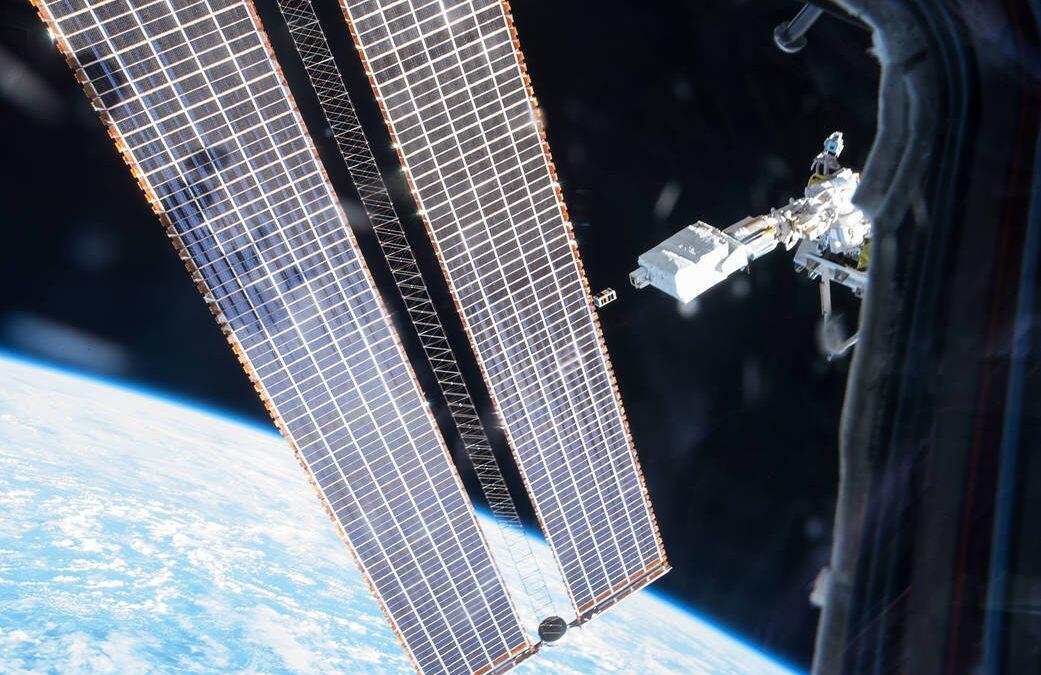A satellite is ejected from the Japan Aerospace Exploration Agency (JAXA) Small Satellite Orbital Deployer on the International Space Station on Dec. 19, 2016. The satellite is actually two small satellites that, once at a safe distance from the station, separated from each other, but were still connected by a 100-meter-long Kevlar tether. NASA astronaut Peggy Whitson helped the JAXA ground team to deploy the satellite, called Space Tethered Autonomous Robotic Satellite (STARS-C). Once deployed, STARS-C will point toward Earth and use a spring system and gravitational forces to separate, pushing one satellite closer to the planet. Besides being a technology demonstration, the investigation will also collect electrons from the plasma environment in space to analyze the creation of an electrical current.
The satellite deployment capability provides a unique satellite launching system for use on the station. Handled by the robotic arm known as the Japanese Experiment Module Remote Manipulator System (JEMRMS), the system provides a reliable, safe and economically viable means of deploying small research satellites into orbit. Crew members load pre-packed satellites into J-SSOD on a special sliding table in the Japanese Experiment Module (JEM) airlock to transfer the payload to the space environment where the robotic arm will grapple it and maneuver into position for deployment.
Source: NASA











